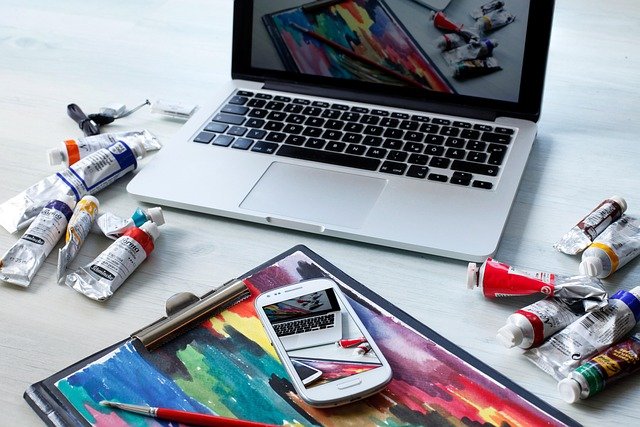Digital Painting 101: Tools, Tips, and Common Mistakes

In the ever-evolving world of art, digital painting has emerged as one of the most versatile and accessible creative mediums. Whether you’re a traditional artist making the leap into the digital realm or a complete beginner with a passion for creating, digital painting opens up a vibrant landscape of possibilities. This guide will walk you through the essentials: the tools you’ll need, helpful tips to get you started, and common mistakes to avoid on your artistic journey.
What Is Digital Painting?
Digital painting is a method of creating artwork on a computer using software that simulates the experience of painting on a canvas. Unlike graphic design or vector-based illustration, digital painting is more akin to traditional painting—it mimics brushes, textures, and layering techniques found in media like watercolor, oil, or acrylics. The goal is expressive, often painterly work that stands out for its creativity, not just precision.
Digital painting is being used in concept art, comics, character design, fine art, advertising, and more. Its reach across industries makes it a powerful skill worth learning.
Must-Have Tools for Digital Painting
Before you begin, you’ll need the right tools. Fortunately, you don’t need a studio—just a few key items to kick off your digital painting journey.
1. Digital Drawing Tablet
A drawing tablet is essential. While a mouse technically works, it’s far too limited for fine brushwork. Tablets range from entry-level models like the Wacom One or Huion H610 Pro to professional tools like the iPad Pro with Apple Pencil or Wacom Cintiq.
Tip: Pressure sensitivity is crucial—it allows you to control stroke thickness and opacity just like with a traditional brush.
2. Digital Painting Software
Your software acts as your canvas. Some popular choices include:
- Adobe Photoshop: The industry standard for professionals.
- Procreate: A favorite among iPad users for its intuitive interface.
- Clip Studio Paint: Excellent for comics and detailed illustration.
- Krita: A free, open-source tool that’s surprisingly powerful.
Each of these programs offers brushes, layers, blending modes, and customization options that make digital painting a flexible and rewarding process.
3. A Reliable Computer or Tablet
Ensure your device has enough processing power and memory to handle large art files. Lag can severely impact your workflow, especially when working with detailed layers or high-resolution images.
Tips for Getting Started in Digital Painting
Learning digital painting takes time and practice, but here are a few tips to set yourself up for success:
1. Start with Simple Sketches
Before jumping into a full painting, practice sketching with your tablet. Focus on line control, pressure variation, and getting comfortable with your digital workspace.
2. Use Layers Wisely
One of the biggest advantages of digital art is the use of layers. Keep different elements (background, characters, shading) on separate layers to allow for easier editing and experimentation.
3. Understand Brush Settings
Don’t rely solely on default brushes. Explore the brush settings—tweak size, flow, scatter, and opacity to suit your style. Over time, you’ll develop a go-to set of brushes.
4. Reference Real-Life Lighting and Textures
Use photo references to understand how light behaves on different surfaces. Digital art can sometimes feel flat if lighting and materials aren’t rendered convincingly.
5. Zoom In, but Don’t Stay There
It’s easy to get caught up in minute details by zooming in too much. Make sure to regularly zoom out and view your piece as a whole to maintain balance and proportion.
Common Mistakes to Avoid
Even experienced artists can fall into certain traps when working digitally. Here are a few common pitfalls and how to sidestep them:
1. Over-Reliance on Undo
The ability to undo mistakes is a major perk, but overusing it can hinder your confidence and decision-making. Try to commit to brush strokes and allow for happy accidents, just like in traditional art.
2. Too Many Layers
While layers are helpful, having too many can slow your system and complicate your workflow. Name your layers clearly and merge or flatten when needed.
3. Ignoring Color Theory
Don’t assume that digital tools will “fix” bad color choices. Understanding hue, saturation, value, and color harmony is just as important in digital as it is in traditional painting.
4. Working Without a Plan
Diving in without thumbnails, rough sketches, or references often leads to inconsistent compositions. Plan your piece like you would in any serious art project.
5. Skipping Warm-Ups
Professional illustrators and painters often warm up before a session with gestures, value studies, or brush practice. It’s a small step that can lead to big improvements in productivity and flow.
Embracing Your Style
One of the most beautiful aspects of digital painting is the freedom it offers. Whether you’re into surrealism, portraiture, fantasy illustration, or abstract compositions, you’ll find the tools you need to explore your unique vision.
Experiment with different brush packs, lighting setups, and software features to uncover what resonates with you. Join digital art communities online (like ArtStation, DeviantArt, or Reddit’s r/learnart) to get feedback, ask questions, and stay inspired.
Final Thoughts
Digital painting is more than just a technological trend—it’s a legitimate and powerful form of art that offers endless creative potential. With the right tools, a curious mind, and consistent practice, you can create stunning, gallery-worthy pieces right from your screen.
So grab your tablet, open your favorite software, and begin experimenting. Mistakes will happen, but they’re part of the process. The digital canvas is forgiving—and infinite.